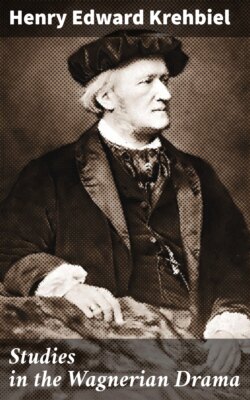Читать книгу Studies in the Wagnerian Drama - Henry Edward Krehbiel - Страница 3
На сайте Литреса книга снята с продажи.
CHAPTER I.
THE WAGNERIAN DRAMA: ITS PROTOTYPES AND ELEMENTS.
ОглавлениеTable of Contents
To understand the real position which Richard Wagner occupies in the world of art, and to appreciate the significance of the achievements which have kept that world in a turmoil for two generations, it is necessary to guard against a very prevalent misconception touching him and his activities. The world knows him as an agitator and reformer, but it does not know as clearly as it ought that the object for which he labored as controversialist and composer was a reform of the opera, not a reform of music in general. Outside the theatre, it is true, he exerted a tremendous influence on the development of the musical art, but that influence he exerted only because he was a gifted musician who stood in the line of succession with the great ones who had widened the boundaries of music and struck out new paths for it—let me say Bach, Haydn, Gluck, Mozart, Beethoven, and Schumann. As a legitimate successor of these Kings by the grace of Genius, he advanced the musical art indeed, but as a reformer his activities went, not to music in its absolute forms, but to an entirely distinct and complex art-form: the modern opera. The term which Wagner invented to describe what he wished to see as the outcome of his strivings—the term which his enemies parodied so successfully that the parody has clung to the popular tongue and lingered in the popular ear, in spite of all explanation—is "The Art-work of the Future." By this "Art-work" he meant a form of theatrical entertainment in which poetry, music, pantomime, painting, and the plastic arts were to co-operate on a basis of mutual dependence—or better, perhaps, interdependence—and common aim, the inspiring purpose of all being dramatic expression. In the history of music and the drama certain strongly-marked phases are found, in which the interdependence of the elements which Wagner consorts in his Art-work can be traced; and if we look at these phases a little thoughtfully, they may help us to understand the present phase, and we may learn not only how to appreciate what Wagner has done, but also how to avoid the misconceptions which so frequently stand in the way of appreciation.
